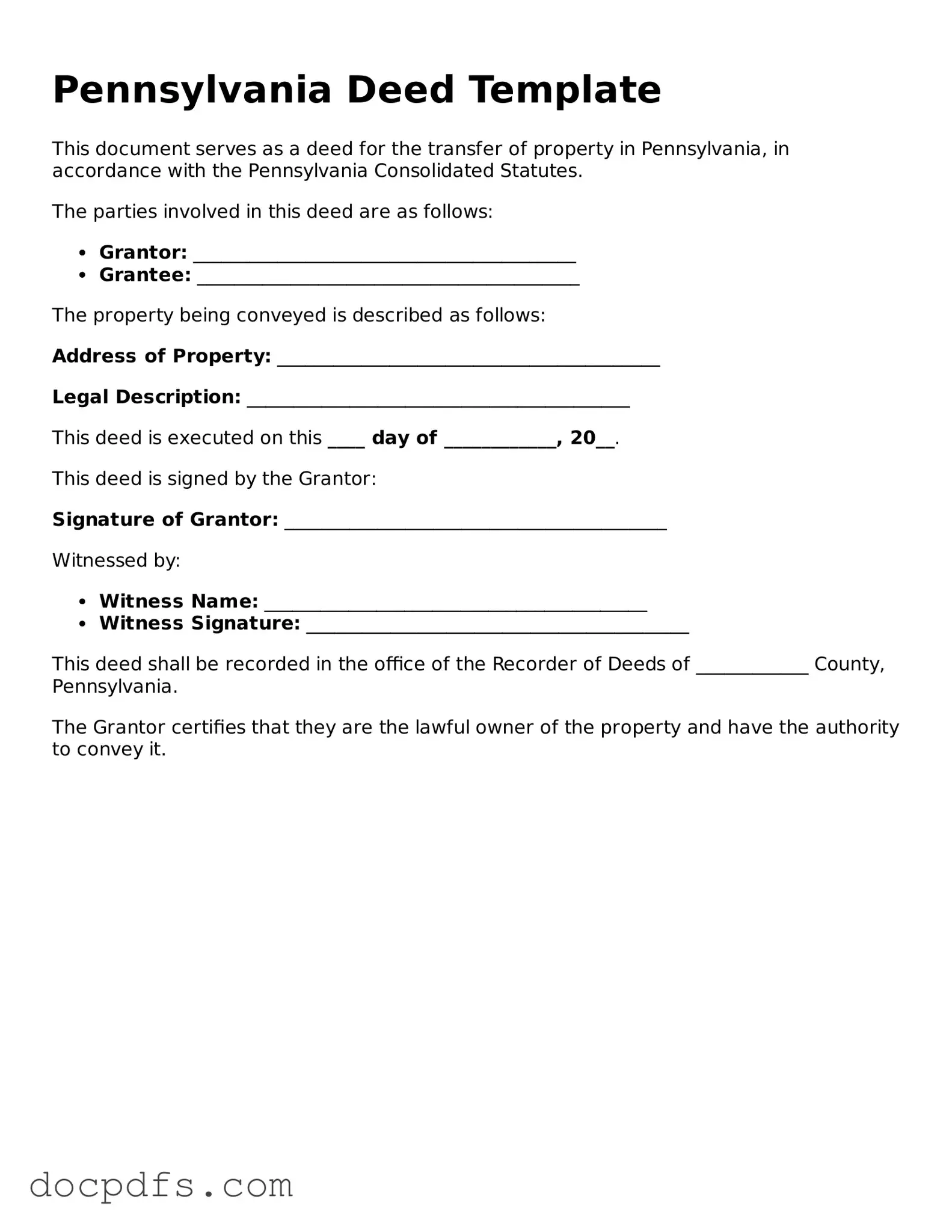When it comes to transferring property ownership in Pennsylvania, the Pennsylvania Deed form plays a crucial role in ensuring a smooth and legally binding transaction. This document serves as a formal record of the transfer, detailing essential information such as the names of the parties involved, a description of the property, and the terms of the transfer. Various types of deeds exist, including warranty deeds, quitclaim deeds, and special purpose deeds, each serving different purposes and offering varying levels of protection to the buyer. Understanding the nuances of these forms is vital for anyone looking to buy or sell real estate in the state. Additionally, the Pennsylvania Deed form must meet specific legal requirements to be considered valid, including proper execution, notarization, and recording with the county's office. By grasping these key elements, individuals can navigate the complexities of property transactions with confidence, ensuring their rights and interests are adequately protected.
